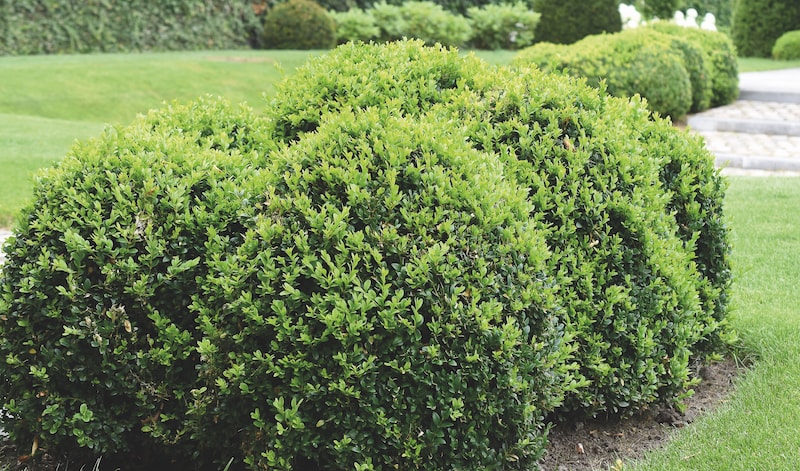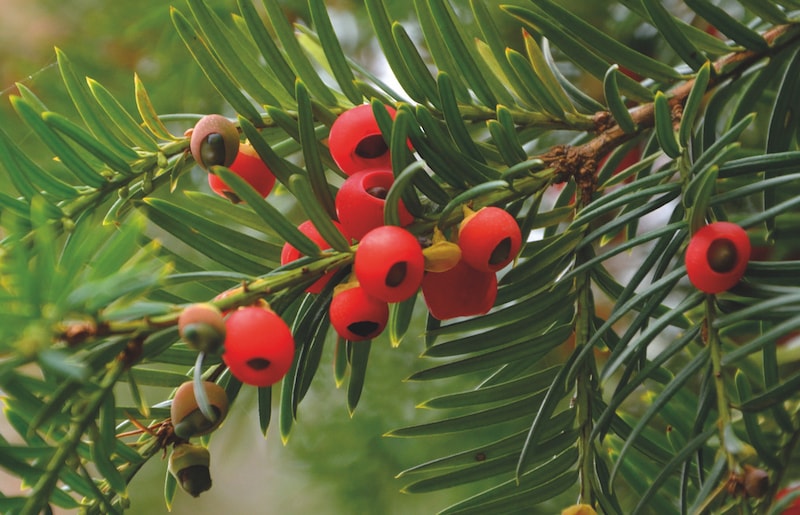Here’s a fantastic collection of independent articles, videos and Instagram posts about hedging plants. If you’re thinking of replacing an old fence, this is the place to start. Hedges serve a number of purposes, from landscaping to blocking road noise and protecting privacy. Acting as natural windbreaks, they also provide welcome shelter for wildlife and more delicate plants.
Whether you’re looking for a formal clipped boundary or a gloriously mixed native hedgerow, check out our full range of hedging plants to help you make the best choice for your garden. From evergreen hedging to flowering options, there’s something to suit every style and budget here.
Contents:
- Best expert advice on choosing your hedge
- Best expert advice on planting your hedge
- Best expert advice on trimming and shaping your hedge
Best expert advice on choosing your hedge

Image: Buxus sempervirens (Common Box) Plant from Suttons
To choose the best hedge for your garden, watch Jenny’s video over at Murphy’s Garden for a great overview of popular varieties. Yew is her favourite as it’s hardy, great for wildlife and suitable for topiary. As yew can grow up to 1ft a year, Jenny says its reputation for being slow-growing is a bit of a myth. Her top tip? “Once you cut the main stem, it then becomes a slow-growing hedge… Leave the main stem until it’s at the height you want.”
Over at The 3 Growbags, Laura, Elaine and Caroline assume their trademark humorous approach when discussing hedging options for autumn planting. While Laura argues the case for hedging as a wildlife haven, Elaine extols the virtues of hedges for dividing up the garden and making it more intriguing: “just basic human nosiness to see what is round the corner, I suppose!” Meanwhile, Caroline’s hedges are “for keeping dogs in and cold winds and strangers out”. Read the full article and choose which sister to side with!
Do you want to “mark a boundary? Encourage wildlife? Are you looking for a hedge for privacy?” The best way to decide which hedge plant is best for you, says Alexandra Campbell of The Middlesized Garden, is to ask yourself why you want one. Considering the pros and cons of all the options, Alexandra likes the idea of a mixed ‘hedge for foragers’ best. Try “hazel, blackthorn (sloe), dog rose (rose hips), wild pear, elder and crab apple,” she suggests.
Hawthorn is a common hedgerow plant that produces vivid red berries in autumn. As well as being edible, hawthorn berries contain flavonoids that are beneficial to the circulatory system, as herbalist Heidi Nisbett of @billericayherbalmedicine explains in her hugely informative Instagram post about hawthorn. She prescribes hawthorn for a range of health conditions and her page provides a fascinating insight into the world of herbal medicine.
The expert gardening team here at Suttons also likes the idea of an edible hedge, as seen in this list of five unusual plants to use as hedges. Bay and rosemary can both be grown as aromatic hedging plants, as well as being valuable additions to your kitchen garden. Slow-growing bay keeps its shape well and can be clipped to form a dense hedge, while the more vigorous rosemary is a favourite for bees. Read the full article to find out which other unusual plants made their shortlist.
Best expert advice on planting your hedge

Image: Taxus baccata (Yew) Plant from Suttons
Over at Down To Earth, Alan’s comprehensive guide to planting a native hedge offers practical tips for giving your new hedge the best chance of success. As well as clearing the weeds before you plant, Alan also recommends putting several centimetres of organic mulch around your new plants, which “smothers the weeds but also traps in moisture during the first year of establishment”. Visit his article for more helpful advice.
Bare root hedging plants are a cost-effective way to start your hedge, according to the Suttons Gardening Advice team in their article on how to plant and care for bare root hedges. Give the roots a good soak in water before planting, but “if you can’t plant your bare root hedging plants within a few days of receiving them, pop them in a bucket and cover the roots with moist compost. This will keep the roots healthy until you’re ready.”
To shelter his garden and maintain colour through the winter, Lee Burkhill of Garden Ninja chose an evergreen variety accustomed to growing in windy places. Watch his step-by-step video guide to planting a garden hedge for some excellent advice. Take a quick peek to see how he gets the roots to establish as quickly as possible. By popular demand, Lee posted a hedge planting guide update three years later to show how his hedge turned out. As you can see, proper care pays off!
Best expert advice on trimming and shaping your hedge

Image: Ligustrum aureum (Golden Privet) from Suttons
Over on YouTube channel Wilderness Tamed, John Robson Grundy recommends trimming hedges into a gentle A-shape for the best results. If your hedge is thicker at the top than the bottom, you’ve got it the wrong way round, he says. For more pro tips, watch his hedge care video to see how he carefully trims his privet so as not to accidentally gouge out a hole.
Whether you’re using shears or a hedge cutter, Adam of Gardeners Tale emphasises the importance of using a sharp tool when trimming your hedge: “it does need to be sharp… otherwise it will tear the needles and [the plant] will end up going brown.” In his video on how to prune and shape yew, he uses a hedge cutter, but for smaller trees he uses shears to get the best finish. Full of top tips, Adam’s video is well worth a watch.
Greg from @rylattsgardening delayed trimming a hedge so as not to disturb the pigeons nesting in it, returning a month later to tame this overgrown group of beeches into a much neater shape. Hedges can be very difficult to check for wildlife so Greg prefers to “wait until nesting season is over.” His posts are a lovely mix of practical gardening tips and whimsical observations about the natural world around him – well worth a follow!
“The key to hedgerows being a bonus for pollinating insects is allowing them to flower. Many hedges only really flower on wood that is at least a couple of years old,” explains the blogger behind Scottish Pollinators. Highlighting the importance of hedgerows for biodiversity, they suggest trying to prune your native hedge plants only once every two or three years. If you’re planting a hedge for wildlife, pruning less often increases the number of fruits and flowers, as well as providing undisturbed places of shelter – all good news for pollinators and other wildlife.
Whether they’re grown for privacy, security, as a boundary marker, a foraging source or a habitat for wildlife, hedges are a great addition to any garden. Take your time to choose your hedging plants carefully, and enjoy a wonderful feature for many years to come.
Lead image: Photinia ‘Red Robin’ (Red Laurel) Plant from Suttons
Last Updated on October 10, 2024 by Suttons Horticultural Team






my 30 year old acer tree is looking unwell. parts of dead woody areas. treated it with insecticide but I need help on how to care for it and help it back to looking magnificent again.
Thank you for all the helpful information